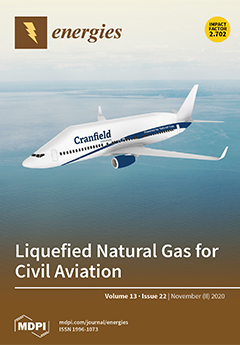Open AccessArticle
Fog Forecast Using WRF Model Output for Solar Energy Applications
by
Saverio Teodosio Nilo, Domenico Cimini, Francesco Di Paola, Donatello Gallucci, Sabrina Gentile, Edoardo Geraldi, Salvatore Larosa, Elisabetta Ricciardelli, Ermann Ripepi, Mariassunta Viggiano and Filomena Romano
Cited by 5 | Viewed by 3779
Abstract
The occurrence of fog often causes errors in the prediction of the incident solar radiation and the power produced by photovoltaic cells. An accurate fog forecast would benefit solar energy producers and grid operators, who could take coordinated actions to reduce the impact
[...] Read more.
The occurrence of fog often causes errors in the prediction of the incident solar radiation and the power produced by photovoltaic cells. An accurate fog forecast would benefit solar energy producers and grid operators, who could take coordinated actions to reduce the impact of discontinuity, the main drawback of renewable energy sources. Considering that information on discontinuity is crucial to optimize power production estimation and plant management efficiency, in this work, a fog forecast method based on the output of the Weather Research and Forecasting (WRF) numerical model is presented. The areal extension and temporal duration of a fog event are not easy to predict. In fact, there are many physical processes and boundary conditions that cause fog development, such as the synoptic situation, air stability, wind speed, season, aerosol load, orographic influence, humidity and temperature. These make fog formation a complex and rather localized event. Thus, the results of a fog forecast method based on the output variables of the high spatial resolution WRF model strongly depend on the specific site under investigation. In this work, the thresholds are site-specifically designed so that the implemented method can be generalized to other sites after a preliminary meteorological and climatological study. The proposed method is able to predict fog in the 6–30 h interval after the model run start time; it has been evaluated against METeorological Aerodrome Report data relative to seven selected sites, obtaining an average accuracy of 0.96, probability of detection of 0.83, probability of false detection equal to 0.03 and probability of false alarm of 0.18. The output of the proposed fog forecast method can activate (or not) a specific fog postprocessing layer designed to correct the global horizontal irradiance forecasted by the WRF model in order to optimize the forecast of the irradiance reaching the photovoltaic panels surface.
Full article
►▼
Show Figures





